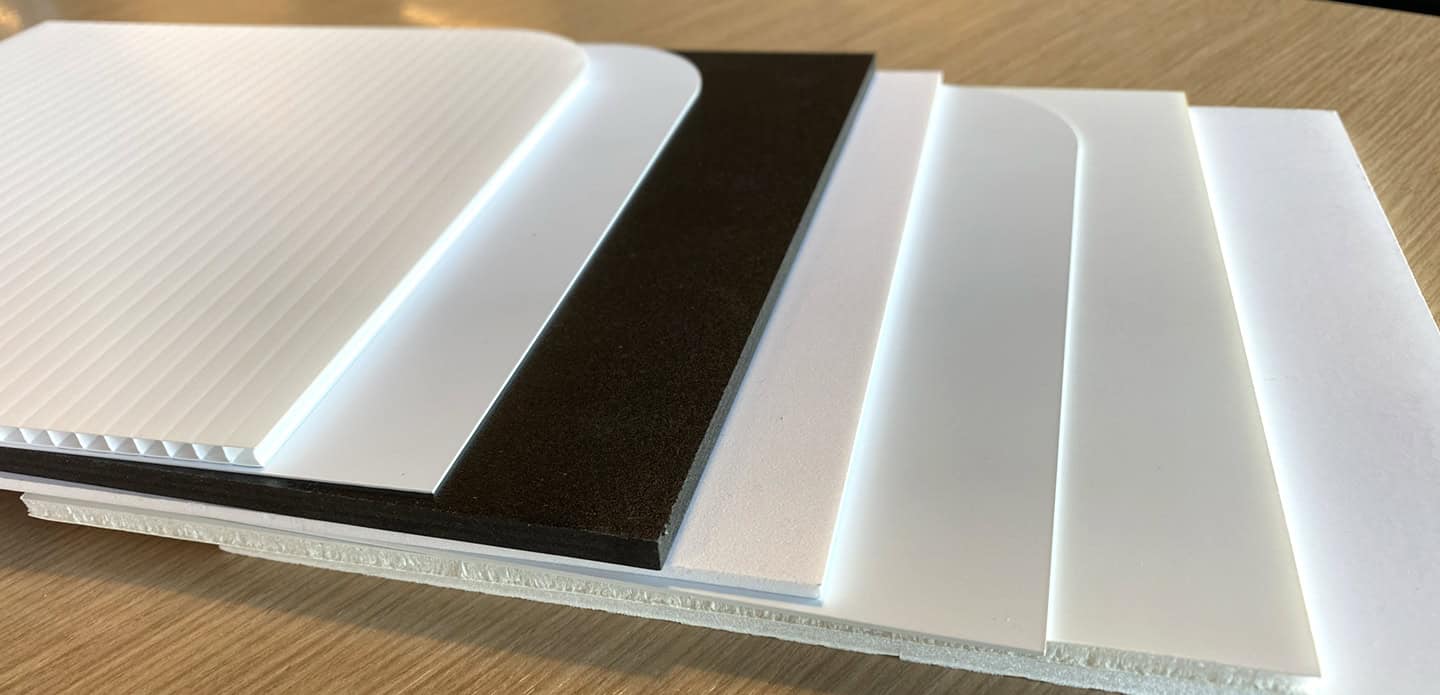Written by Stacy Trager
When it comes to signage, the choice of materials plays a crucial role in both functionality and aesthetics. The right material can ensure durability, visibility, and a professional appearance, making it essential to understand the options available. In this blog post, we’ll explore the most common sign materials and their ideal applications.

Acrylic and polycarbonate materials are versatile and durable materials often used for high-end, professional signage. Stronger than glass
and more shatter-resistant, they offer a sleek and modern look that lasts.
Applications:
Benefits:
Aluminum is a popular choice for outdoor signage due to its durability and resistance to rust. It’s lightweight and easy to customize with
different finishes.
Applications:
Benefits:
Dibond is a composite material made of two aluminum sheets with a solid polyethylene core. It’s highly durable and perfect for outdoor and
indoor signage.
Applications:
Benefits:
Coroplast is a lightweight and cost-effective option, often used for temporary or promotional signs. It’s made from corrugated
polypropylene, making it water-resistant and easy to transport.
Applications:
Benefits:
PVC signs are rigid and durable, with a smooth surface that is ideal for vibrant printing. These signs work well both indoors and outdoors,
although dibond is a better choice for long-term outdoor use.
Applications:
Benefits:
Foam board is a lightweight material often used for short-term indoor applications. It’s made of a foam core sandwiched between paper or
plastic sheets.
Applications:
Benefits:
Wooden signs are classic and timeless, offering a rustic or handcrafted aesthetic. These signs are often customized with carving, painting,
or staining.
Applications:
Benefits:
Magnetic signs are made from flexible magnetic sheeting, making them ideal for temporary and movable applications.
Applications:
Benefits:
Banner material is typically made from vinyl or mesh, providing a flexible and cost-effective solution for large-format signage.
Applications:
Benefits:
The best sign material depends on factors such as location, purpose, budget, and durability requirements. For example:
By understanding the strengths and ideal uses of each material, you can make an informed decision that enhances your brand’s visibility and impact. Need help selecting the perfect material? Contact us for expert guidance and custom sign solutions!